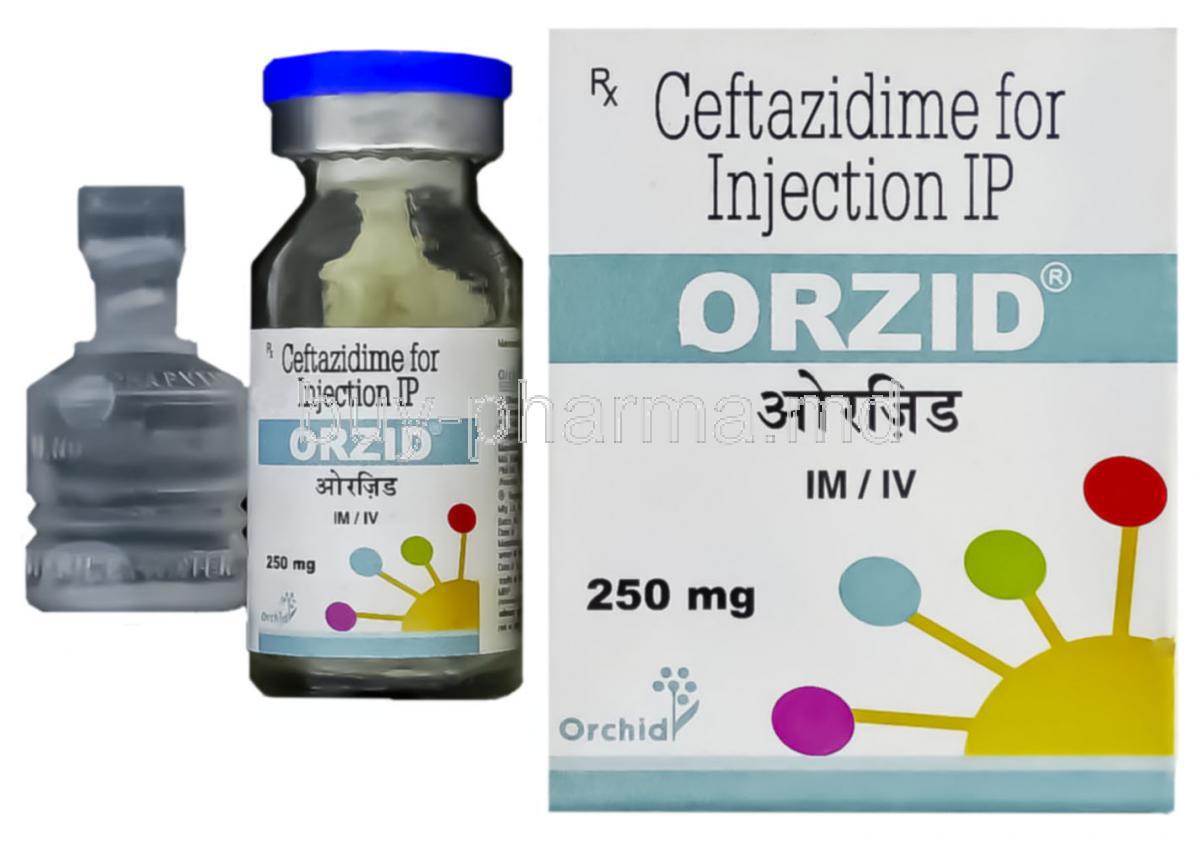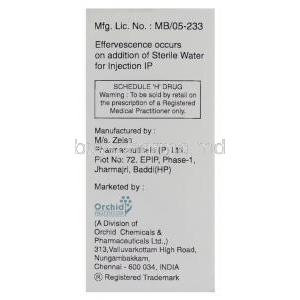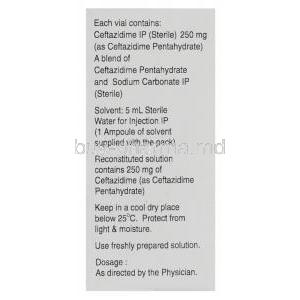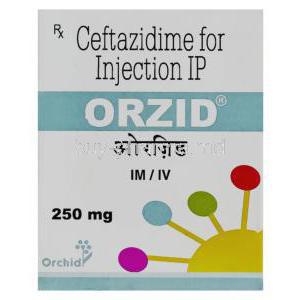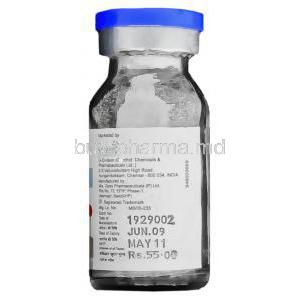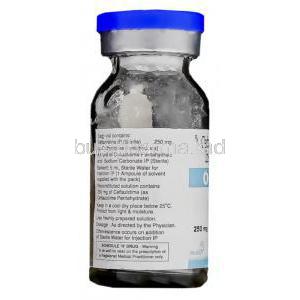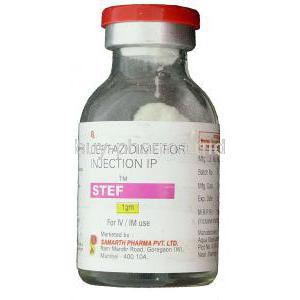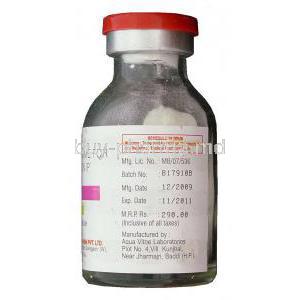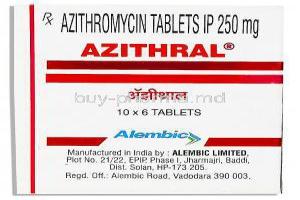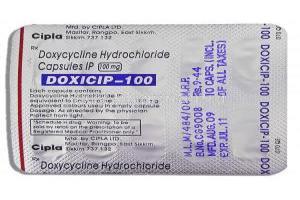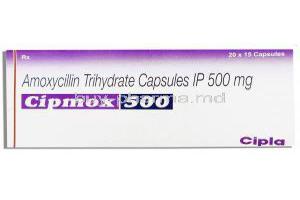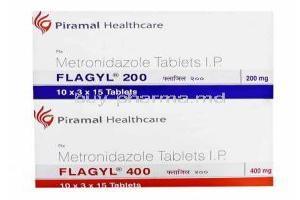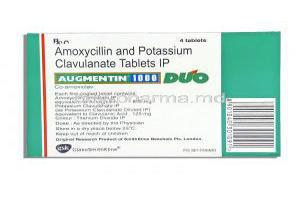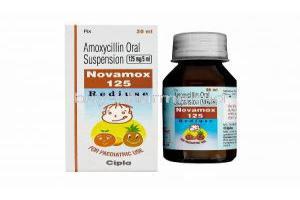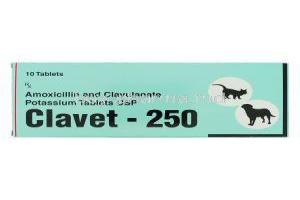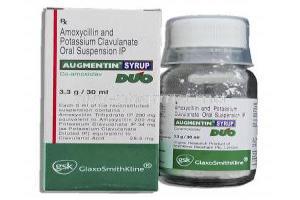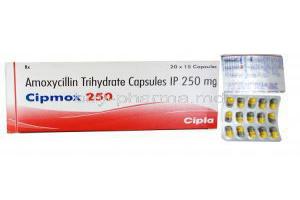Ceftazidime Injection
- I. What is Ceftazidime Injection?
- II. Composition
- III. Uses
- IV. Off-Label Uses
- V. How Ceftazidime Works
- VI. Dosage and Administration
- VII. Adjustments for Specific Populations
- VIII. Ceftazidine Side Effects
- IX. Important Precautions
- X. Interactions
- XI. Warnings and Contraindications
- XII. Handling and Storage
- XIII. Overdosage
- XIV. Careful Administration
I. What is Ceftazidime Injection?
Ceftazidime, a third-generation cephalosporin antibiotic, is well known for its effectiveness in fighting a wide range of bacterial infections caused by Gram-negative bacteria. Its strength plays a role in treating severe bacterial infections.
II. Composition
The Ceftazidime Injection is mainly made up of ceftazidime pentahydrate as the component. Other additives, like sodium carbonate, may be added to maintain the solution's pH stability. These ingredients are carefully adjusted for treatment purposes to guarantee absorption and effectiveness.
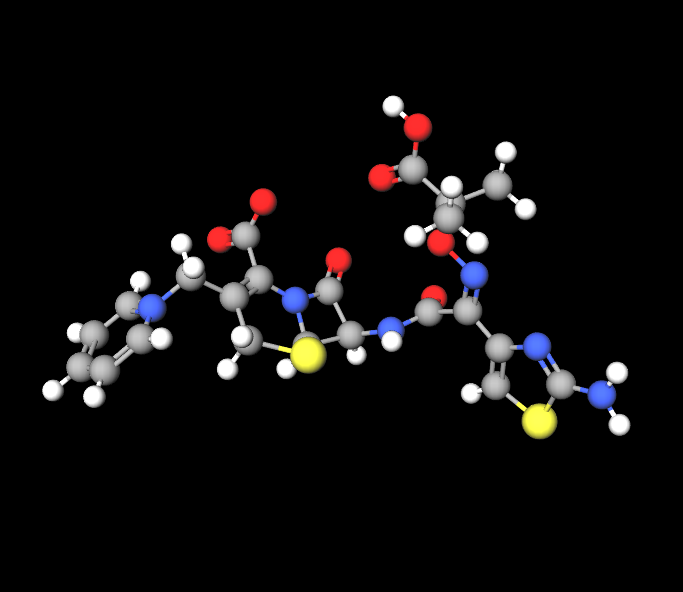
III. Uses
- Respiratory Tract Infections: Ceftazidime is effective in treating lower respiratory tract infections1.
- Urinary Tract Infections: It is also used for urinary tract infections1.
- Skin Structure Infections: Ceftazidime is indicated for skin structure infections1.
- Meningitis: It plays a role in the treatment of meningitis1.
IV. Off-Label Uses
The use of Ceftazidime goes beyond its intended purposes as it is often used off label to treat infections not initially listed on its label. Additionally, ceftazidime is beneficial for conditions such as pneumonia, peritonitis, and sepsis, especially when rapid antimicrobial effects are necessary1.
V. How Ceftazidime Works
The medication works by killing bacteria by interfering with the production of the cell wall, causing the cells to break down and die. Ceftazidime attaches to penicillin-binding proteins that are essential for building the cell wall, preventing them from functioning properly. Its effectiveness extends to combating a range of bacteria, including those that thrive with or without oxygen.
VI. Dosage and Administration
The proper doses of Ceftazidime differ based on the kind and seriousness of the infection. The ways to administer it include intramuscular injections, customized to guarantee the best absorption into the body and patient cooperation.

VII. Adjustments for Specific Populations
Elderly Patients
Changes in dosage might be required for individuals as their kidney function could decrease, requiring close observation and tailored dosing according to how each person responds to the medication.
Pregnant Women and Nursing Mothers
Despite the scarcity of data, Ceftazidime should be administered during pregnancy. Breastfeeding only if absolutely necessary with close medical oversight following established safety protocols and medical recommendations.
Children
Dosage, for children, is meticulously adjusted according to their age and weight to guarantee safety and efficacy in this group.
VIII. Ceftazidine Side Effects
Common Side Effects
- Skin irritations
- Feeling sick to the stomach
- Redness or swelling at the injection site
These responses are usually not severe. They tend to resolve on their own, but keeping a close watch and providing relief as needed can help reduce any discomfort and avoid any issues.
Severe Side Effects
Serious side effects, like severe allergic reactions and infections linked to Clostridium difficile bacteria, need urgent medical attention and could lead to lasting health issues if not treated promptly.
IX. Important Precautions
It is crucial to be cautious when giving Ceftazidime to ensure it is safe and effective. Important precautions to consider include:
1. Interactions with medications: Ceftazidime could interact with drugs that affect the kidneys or diuretics, so it is important to administer them carefully together.
2. Allergic reactions and hypersensitivity: Look for signs of reactions such as skin rashes, itching, or more serious responses, like anaphylaxis.
3. Monitoring parameters; It is recommended to check renal and liver function to prevent potential toxicity and adjust the dosage as necessary.
X. Interactions
Knowing how Ceftazidime interacts with substances can help prevent unwanted reactions and improve treatment outcomes.
- When using Ceftazidime alongside antibiotics or anticoagulants, there may be changes in drug levels and effects, which could necessitate adjustments in dosage or closer monitoring.
- While Ceftazidime is generally not significantly affected by food intake specific dietary components might impact its absorption. Lead to side effects.
- It's important to note that Ceftazidime could interfere with laboratory tests, such as urinary glucose tests and liver function assessments.
XI. Warnings and Contraindications
Use Ceftazidime cautiously in situations where health concerns, Colitis, kidney problems, or past severe allergic reactions to beta-lactam antibiotics could make its use unsuitable.
Aspects: Differences in drug metabolism enzymes due to genetics might affect how well and safely Ceftazidime works, requiring genetic testing in specific instances.

XII. Handling and Storage
It is essential to handle and store Ceftazidime correctly to ensure its effectiveness:
- Storage guidelines: Keep the vials in a dry area away from light and moisture to maintain stability and strength.
- Precautions for handling: Healthcare professionals should employ methods when preparing the solution to avoid contamination.
XIII. Overdosage
In case of an overdose, it is crucial to act. Signs and symptoms of an overdose include problems like seizures, confusion and encephalopathy.
Emergency treatment and antidotes are essential for managing the situation with care, and possibly hemodialysis is needed in severe cases to eliminate the drug from the body effectively.
XIV. Careful Administration
Reducing mistakes in managing medications is crucial for providing efficient treatment. Ways to prevent errors in administering medication include reviewing the patient's medication history and verifying dosages prior to giving them. To maintain the integrity and effectiveness of drugs, it's important to adhere to established procedures for preparing and administering them.

